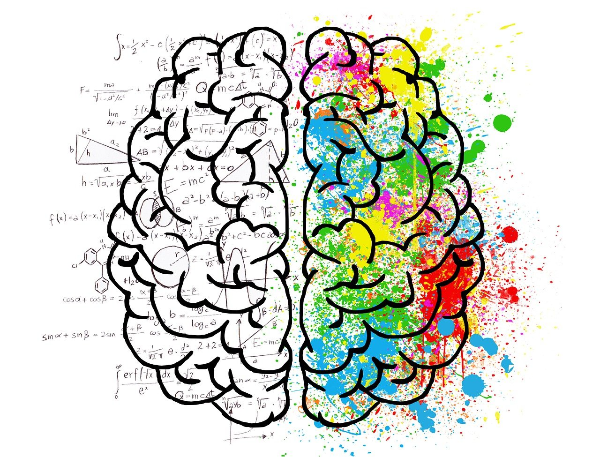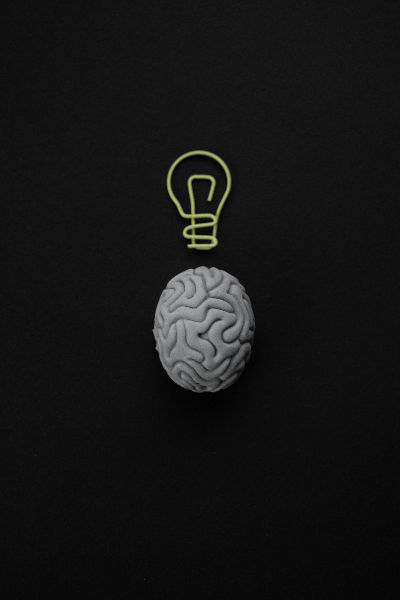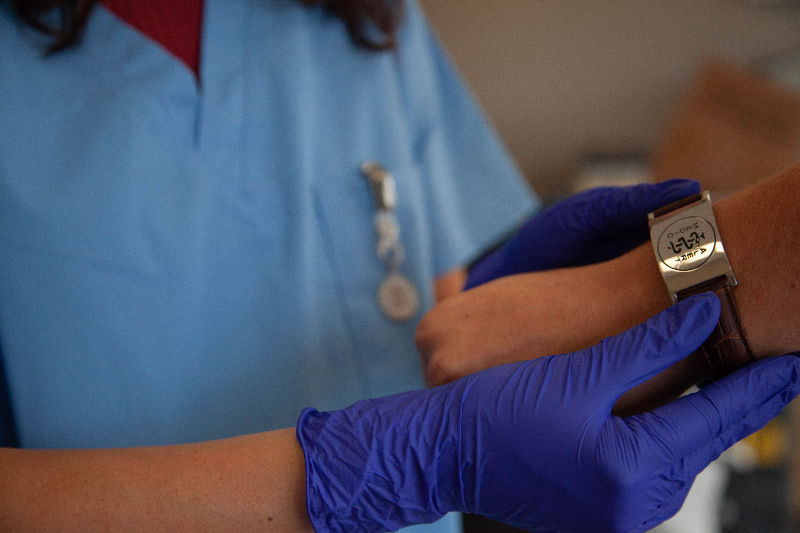How Does Brain Painting Work?
- Apr 28
- 8 min read
Updated: Aug 24

You've landed on the definitive guide to Brain Painting, the revolutionary neurofeedback technique transforming mental health treatment. We'll walk you through the entire process, reveal who benefits most, and explain how this therapy harnesses the brain's own ability to change for powerful, lasting results.
What specific mental health conditions is Brain Painting designed to help with?
Brain painting is designed to help individuals manage mental health issues such as depression, insomnia, anxiety, ADD/ADHD, PTSD, addiction, and brain injury. It is also beneficial for addressing fears, phobias, trauma-based stress reactions, and performance issues.
We've only scratched the surface of this innovative therapy. Keep reading to discover the precise process of mapping the brain, how it works in tandem with the principle of neuroplasticity, and what critics and proponents have to say about its effectiveness.
What is Brain Painting and How Does This Neurofeedback Therapy Map Your Brain?
Brain Painting is an innovative form of neurofeedback therapy that can help alleviate stress, depression and other mental health issues. The technique uses biofeedback to measure the patient's brain activity when exposed to certain stimuli or questions. A technician places sensors on a patient’s scalp, which measure their brain response. These sensors are then used to collect data that is used to create a “brain map,” which provides insight into the brain's function.
By understanding how the brain functions, Brain Painting allows for a deeper level of therapy as it reveals underlying issues or disturbances in the brain and helps identify areas where treatment would be most effective.
Through continued use of this therapy, patients can use the data collected to better manage their emotions and behaviors, leading to improved mental health outcomes. Brain Painting is a safe and effective way for people to gain insight into their own brain activity and work towards improving their overall wellbeing.
What is the Process?
The EEG process begins with attaching sensors to the patient's scalp in various spots. These sensors measure electrical activity within the brain, allowing technicians to detect patterns and changes as they happen.
Once these sensors are attached, the technician will then administer a series of questions that maps out the brain's response to certain stimuli or questions. This allows them to make a comprehensive assessment of the brain's functioning and any abnormalities or irregularities in patterns. After all of the testing is complete, the technician will analyze the data to create an EEG report that can be used for diagnosis and treatment.
The entire process takes approximately one hour, with no discomfort felt by the patient throughout. The technician may also take additional measurements, such as eye movements or muscle activity, if needed. By the end of the process, the technician will have a complete picture of the patient's brain functioning that can be used to diagnose and treat any issues.
The EEG is one of the most important tools for neurologists in identifying and treating neurological disorders, making it an invaluable part of the healthcare system. With accurate data, medical professionals can develop better treatments and therapies to help patients with neurological issues.
Who Is Brain Painting Designed for?

Brain painting is designed to help individuals with mental health conditions such as depression, insomnia, anxiety, ADD/ADHD, PTSD, addiction, and brain injury.
It can also be of great benefit to those who struggle with increased energy levels, relationships issues, fears or phobias, trauma-based stress reactions and post-traumatic stress disorder (PTSD), autism, performance issues, test anxiety, meditation or mindfulness practices and brain injuries.
Brain painting is also helpful for those who may need help with specific situations such as public speaking or a job interview. Brain painting offers rapid transformation from problem states to desired outcomes using visual imagery and other techniques that provide powerful and lasting results.
This type of therapy is ideal for people who prefer a visual approach to self-exploration and personal growth. By using imagery and creative expression, brain painting gives clients a sense of control over their own lives in ways that traditional talk therapy cannot provide.
Through this approach, individuals are empowered to explore their inner worlds without feeling judged or overwhelmed. Brain painting helps clients to recognize and understand the messages that their inner selves are sending them, and makes it easier to access powerful emotions in a safe, supportive environment. It gives people the opportunity to gain insight into how they can make positive changes in their lives, which ultimately leads to greater personal growth and emotional well-being.
How Brain Painting Works: Harnessing Neuroplasticity for Change
Neuroplasticity is the brain's ability to reorganize itself by forming new neural pathways. This allows us to better understand and process the world around us. Through neuroplasticity, a person can learn healthy coping strategies, adapt to difficult situations, and restructure their thoughts in order to have more positive outcomes in life.
Neuroplasticity also allows us to change our behavior and form new habits in order to create long-term benefits. In this therapy, these neuroplastic changes are harnessed to help those suffering from mental health issues. Through the practice of mindfulness and cognitive-behavioral techniques, we can rewire our brains to better manage stress, anxiety, depression, and other mental and emotional health issues.
This rewiring of our brains allows us to be more resilient in the face of difficult emotions, experiences, and situations. Through regular practice and reinforcement of positive thoughts and behaviors, we can achieve long-term relief from these symptoms. These neuroplastic changes are not easy to achieve on your own.
That's why it is so important to seek out professional help and support while undergoing this therapy. A qualified therapist can provide guidance, tools, strategies, and techniques that will help you reach your desired outcomes in a safe and supportive environment. With the right approach and dedication to practice, you can finally find long-term relief from your mental health issues.
The power of neuroplasticity can be utilized to help us create a healthier and more positive mindset, providing long-term relief from psychological distress. With the right approach and dedication to practice, you can finally begin your journey toward recovery.
What do the Critics say about Biofeedback and Brain Painting?

Many critics of biofeedback and brain painting argue that the equipment used is too expensive, may not give accurate readings, and often cannot be covered by insurance policies. Furthermore, they claim that it is nothing more than a costly form of muscle relaxation, making therapy potentially expensive for those who require numerous sessions of treatment.
However, proponents of biofeedback and brain painting maintain that the effects are real, and have been proven to provide relief from a multitude of conditions. Many individuals have found success in using these techniques to regulate their emotions, reduce stress and anxiety levels, increase focus and concentration, and improve overall wellbeing.
Moreover, research has shown that the effects of biofeedback and brain painting can be sustained over time, suggesting that regular use could have lasting results. Ultimately, whether one believes in the validity of biofeedback or not, it remains an area worth exploring for those seeking alternative treatments to traditional modalities.
In any case, it is always important to consult with a medical professional before beginning any type of treatment. It is ultimately up to the individual to decide whether biofeedback and brain painting are suitable for them, and if their potential benefits outweigh their costs. However, with increased research and evidence-based findings, these alternative therapies may soon become more widely accepted and accessible.
How We Use This Modality at Chateau Recovery
At Chateau Recovery, neurofeedback is used in combination with other forms of treatment to address mental health and substance abuse issues. Our experienced professionals are expertly trained in the use of this cutting edge technology as an adjunct to traditional treatments like medication management, doctor visits, group and individual therapies, and nutrition counseling.
Neurofeedback provides an alternative approach to helping patients build new connections in their brains and restore balance to their mental health. At Chateau, we use neurofeedback to help our patients achieve a greater level of self-awareness and better equip them with the tools they need for healthier living.
With neurofeedback, our team can measure brainwave patterns and provide feedback that can help patients regulate their emotions, improve concentration, combat cravings, and manage symptoms of mental health disorders such as depression and anxiety. Neurofeedback is a drug-free solution that can be used in tandem with traditional methods to achieve lasting change.
At Chateau Recovery, we believe neurofeedback should be part of a holistic approach to recovery. We use this cutting-edge technology to complement our comprehensive treatment program and give our clients the best chance of achieving lasting sobriety. Our team is committed to offering tailored solutions that meet each individual’s needs and help them lead more fulfilling lives.
Frequently Asked Questions:
• How long does the initial Brain Painting/EEG process take, and is it uncomfortable?
The entire process takes approximately one hour, with no discomfort felt by the patient throughout the session.
• What is the main principle by which Brain Painting works with the brain?
It works by harnessing neuroplasticity, which is the brain's ability to reorganize itself by forming new neural pathways, allowing individuals to learn healthy coping strategies and restructure thoughts.
• What is the very first step in the EEG process for Brain Painting?
The EEG process begins with attaching sensors to the patient's scalp in various spots to measure electrical activity within the brain.
• What is one of the main criticisms of biofeedback and Brain Painting?
Many critics argue that the equipment used is too expensive, may not give accurate readings, and often cannot be covered by insurance policies.
• Besides brain wave activity, what other measurements might a technician take during the Brain Painting EEG process?
The technician may also take additional measurements, such as eye movements or muscle activity, if needed.
You don't have to face mental health challenges alone. We at Chateau Health and Wellness Treatment Center understand the potential Brain Painting and neurofeedback offer, using this cutting-edge modality as an adjunct to our holistic treatment programs for depression, anxiety, addiction, and more. We are committed to helping you achieve greater self-awareness and equip you with the tools needed for lasting change and healthier living. If you're ready to explore our comprehensive, tailored solutions and begin your journey toward recovery, please call us today at (435) 222-5225—we are here to help you lead a more fulfilling life.

About The Author
Austin Pederson, Executive Director of Chateau Health and Wellness
Brings over eight years of experience revolutionizing mental health and substance abuse treatment through compassionate care and innovative business strategies. Inspired by his own recovery journey, Austin has developed impactful programs tailored to individuals facing trauma and stress while fostering comprehensive support systems that prioritize holistic wellness. His empathetic leadership extends to educating and assisting families, ensuring lasting recovery for clients and their loved ones.
Danny Warner, CEO of Chateau Health and Wellness
Brings a wealth of experience in business operations, strategic alliances, and turnaround management, with prior leadership roles at Mediconnect Global, Klever Marketing, and WO Investing, Inc. A graduate of Brigham Young University in Economics and History, Danny has a proven track record of delivering results across diverse industries. His most transformative role, however, was as a trail walker and counselor for troubled teens at the Anasazi Foundation, where he directly impacted young lives, a personal commitment to transformation that now drives his leadership at Chateau.
Ben Pearson, LCSW - Clinical Director
With 19 years of experience, Ben Pearson specializes in adolescent and family therapy, de-escalation, and high-risk interventions. As a former Clinical Director of an intensive outpatient program, he played a key role in clinical interventions and group therapy. With 15+ years in wilderness treatment and over a decade as a clinician, Ben has helped countless individuals and families navigate mental health and recovery challenges.










